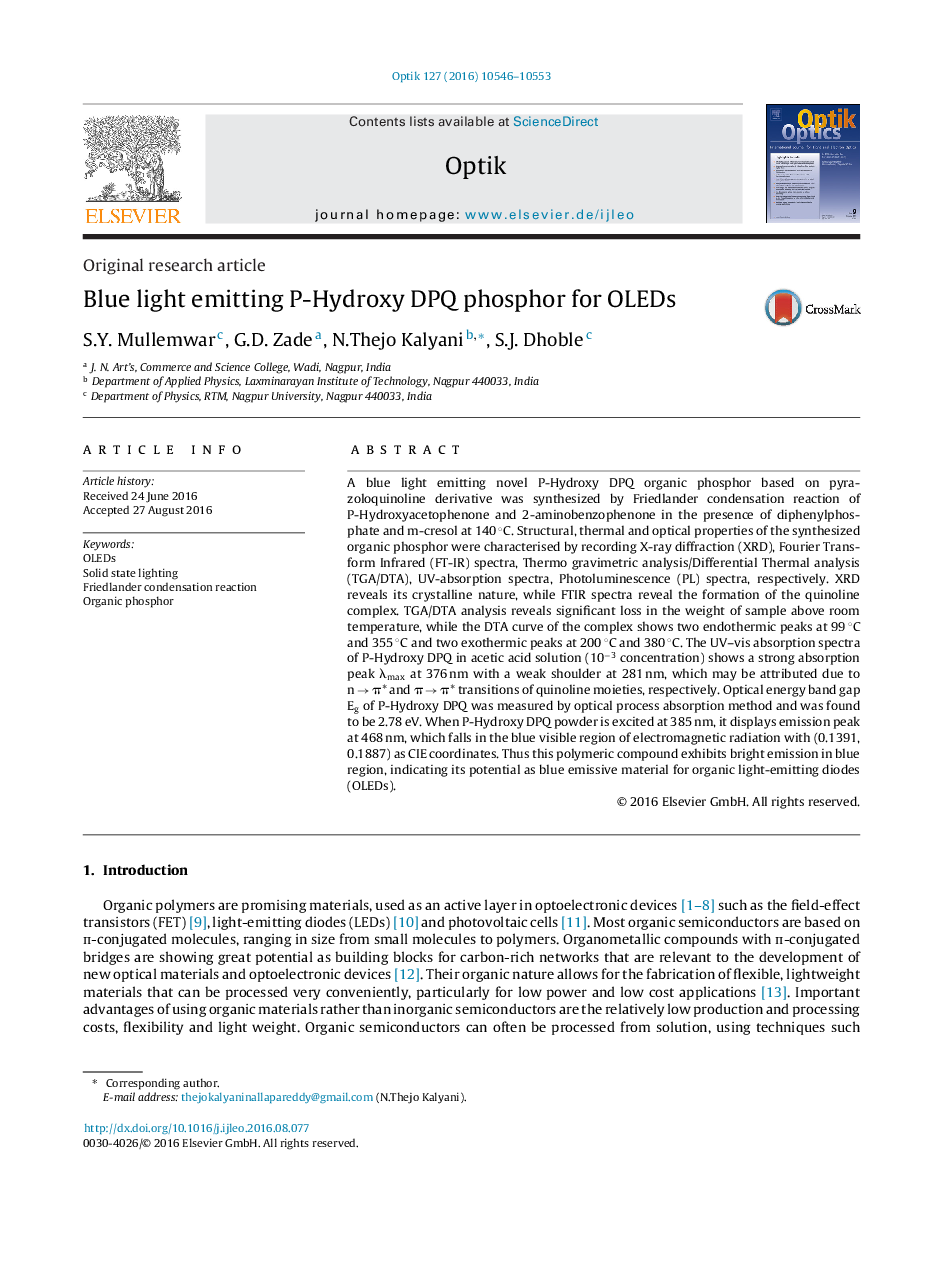| Article ID | Journal | Published Year | Pages | File Type |
|---|---|---|---|---|
| 5026402 | Optik - International Journal for Light and Electron Optics | 2016 | 8 Pages |
A blue light emitting novel P-Hydroxy DPQ organic phosphor based on pyrazoloquinoline derivative was synthesized by Friedlander condensation reaction of P-Hydroxyacetophenone and 2-aminobenzophenone in the presence of diphenylphosphate and m-cresol at 140 °C. Structural, thermal and optical properties of the synthesized organic phosphor were characterised by recording X-ray diffraction (XRD), Fourier Transform Infrared (FT-IR) spectra, Thermo gravimetric analysis/Differential Thermal analysis (TGA/DTA), UV-absorption spectra, Photoluminescence (PL) spectra, respectively. XRD reveals its crystalline nature, while FTIR spectra reveal the formation of the quinoline complex. TGA/DTA analysis reveals significant loss in the weight of sample above room temperature, while the DTA curve of the complex shows two endothermic peaks at 99 °C and 355 °C and two exothermic peaks at 200 °C and 380 °C. The UV-vis absorption spectra of P-Hydroxy DPQ in acetic acid solution (10â3 concentration) shows a strong absorption peak λmax at 376 nm with a weak shoulder at 281 nm, which may be attributed due to n â Ï* and Ï â Ï* transitions of quinoline moieties, respectively. Optical energy band gap Eg of P-Hydroxy DPQ was measured by optical process absorption method and was found to be 2.78 eV. When P-Hydroxy DPQ powder is excited at 385 nm, it displays emission peak at 468 nm, which falls in the blue visible region of electromagnetic radiation with (0.1391, 0.1887) as CIE coordinates. Thus this polymeric compound exhibits bright emission in blue region, indicating its potential as blue emissive material for organic light-emitting diodes (OLEDs).
